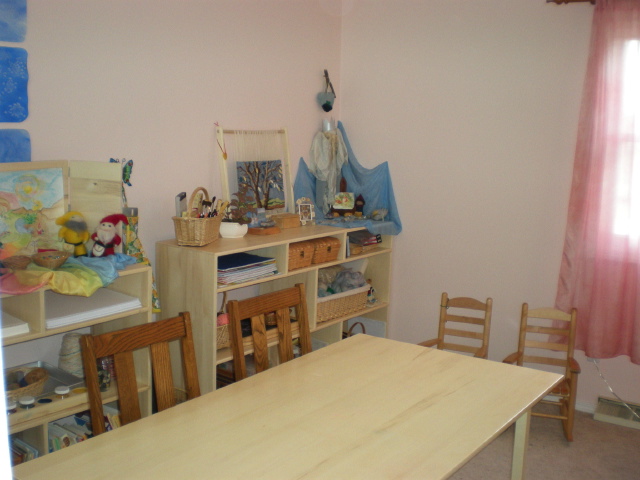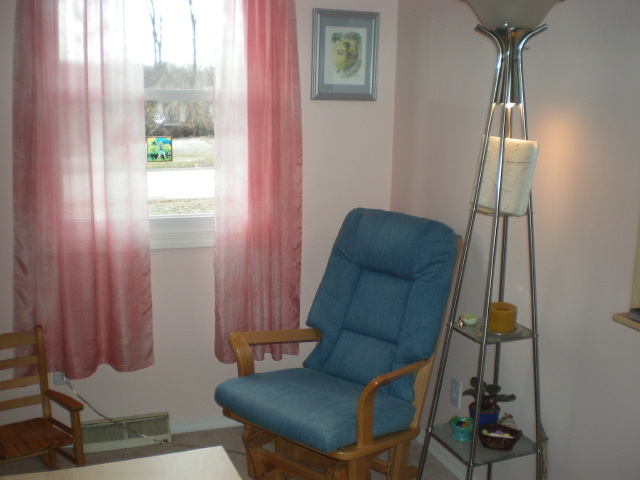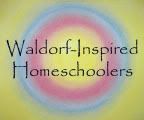Making the cut
Saturday, February 23rd, 2008I’m the first to admit it — I’m a Waldorf curriculum junkie. I just can’t help myself. There is such a wealth of good material. This was always the problem for me in my research. I simply don’t know when to stop collecting information and to start integrating it. The good thing is, in homeschooling, one eventually has to make a decision about how to approach the next day’s lesson.
I began our homeschooling year with only two main resources. After long consideration of what curriculums to use, I settled on Live Education and Christopherus. I like the contrast of the two, and how they compliment each other. Donna Simmons’ Christopherus syllabus is exactly as she advertises it — practical Waldorf at home. I love the structure of Donna’s materials, the clear indication of how a homeschooling first grade year might proceed. I have relied on her framework to guide us through the year, and enjoyed the security of knowing what will likely come next.
Live Education has been the frosting on the cake. When I first received the curriculum I nearly swooned at the beauty of it. Now, I know, I am a sucker for packaging. Given the choice between a glass of water and a glass bottle of water with a pretty label, I’m all about the latter. But in this case the beautiful presentation is not superfluous. It offers inspiration. And inspiration, in my opinion, is the most essential ingredient to successful homeschooling. At first, when going through the Live Ed guides for the first year, I was a bit overwhelmed. There is so much content and visual material that for a newbie like me it was hard to know how to organize all of it. But working with the Christopherus syllabus has helped tremendously. I can get a general idea of what I want to present and then use the Live Ed to expand and embellish the lesson.
Our first main lesson block, after a week of beginning form drawing and establishing our daily rhythm, was an introduction to the capital letters of the alphabet. This was a critical first lesson for us. It was an ‘unveiling of the goods’, so to speak — Starling’s foray into the world of learning. She was beside herself with anticipation. And me? I felt like a stage actor about to go on a very important audition. Would I make the cut? I so much wanted to set the tone for the year, to make it magical, to draw her in. So on the first day of our lesson, she entered the room to see the blackboard draped with a silk. We said our morning verse, did our circle activities, lit the story candle and settled in for a story. I could tell she was desperate to see what was under the cloth. But she controlled her urge to look. Even little Chickadee didn’t sneak a peek. Before I started the story I took the silk away to reveal a blackboard drawing.
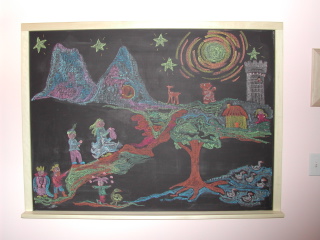

It was met with wide eyes and complete silence. So far, so good, I thought.
The drawing was a visual summary of a story offered in the Christopherus First Grade syllabus about a young Prince who sets out on a journey with a Wise Woman and learns life lessons that will eventually make him worthy of becoming king. The story is divided into two parts. The first episode of the saga introduces most of the letters. Then the main lesson block is allowed to “rest” for several weeks until it is revisited and finished with the presentation of the remaining letters.
The first episode lasted for three weeks. Each of the consonant letters was presented in the form of an image which I had drawn ahead of time and hung on the wall the night before, to be discovered by Starling in the morning. The letter images were created with beeswax crayons and looked very similar to the chalk versions found in the large blackboard drawing, but with more attention given to the definition of the letter. Only two or three letters were shown at a time. After hearing the account of the Prince’s latest adventure, Starling made her own drawings in a spiral-bound main lesson book, using my pictures for reference.
She was really proud of the results.
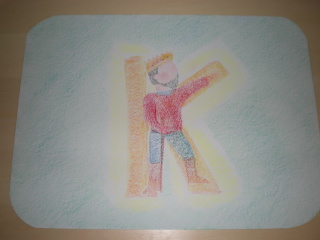
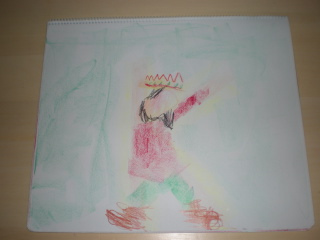
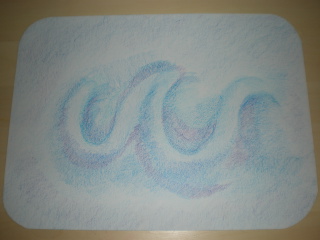
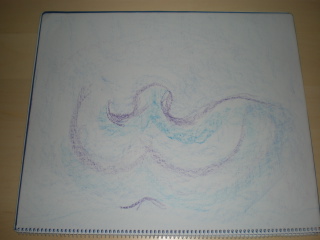
The vowels on the other hand were presented in a different fashion. Instead of being associated with an image, each vowel was connected, through the story, to a feeling — A (ah) with a feeling of awe, E (eee) with a feeling of fear, etc. [Rudolf Steiner referred to the importance of gesture in teaching the vowels, for “the vowels are an expression of man’s inner being”.] Each time the Prince experienced a new feeling the Wise Woman gave him a golden star with the vowel printed on it for him to keep close to his heart. In order to help create a feeling of expectancy in Starling, I had a satin purple sack (just like the one carried by the Wise Woman) that I kept hanging beside the story chair. When the Prince received a golden star from the Wise Woman so did Starling for her main lesson book. The special stars would only appear on the day a specific vowel was presented, otherwise the sack was empty.
We worked with a two-day rhythm for this block. On the first day of the week I told the story and Starling made the drawings in her main lesson book. On the second day Starling helped me to retell the story from the day before, and then we worked with the letters. We did some outside activities–‘walking’ the letters, games with the letters on the sidewalk, finding shapes in nature that echo the shape of the letters. Indoor activities included speech work like tongue twisters (Starling’s favorite: The queen quickly questioned and quietly quarreled with quite queer queries and quibbles.) and songs (Chickadee’s favorite: the ‘Wave Song’ from Xavier Sings of his Alphabet friends by Mary Lynn Channer).
By the time we returned to the second episode of the story (in early December) Starling was eager to say that she had learned the whole alphabet. She also wanted to do more copy work from the board, so we wrote longer sentences to accompany the letters. A really lovely detail of the second part of the story from Christopherus is how the letters X, Y and Z are presented. Part two of the alphabet main lesson block is presented right before Christmas, so the letters X, Y and Z are connected with the image of the three shepherds. Tied into the story of the Prince and the Wise Woman is an account of the Christmas story as experienced by the three shepherds. The creation of these three letter images left quite an impression on Starling, and tied together our homeschooling work with our preparations for the holiday in a very meaningful way.
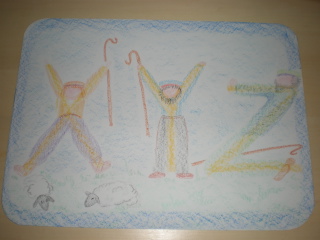

By all accounts, our first main lesson block was a success. And great news . . . I made the call backs!
